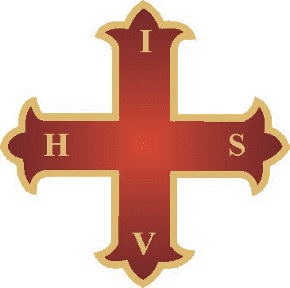Appendant Orders
The purpose of the Constantinian Orders are to commemorate the first elevation of Christianity from the position of a despised and proscribed heresy to that of a legally recognized and honored religion, to cultivate the social virtues, appeal to the intellectual and moral qualities, preserve as far as possible the customs of the fraternity and bring about good fellowship and understanding between all branches of Masonry.
Order of the Red Cross
KNIGHT MASON
On admission to the Order a member becomes a Knight-Mason, or a Knight of the Red Cross of Constantine. This ceremony is known as installation, and is performed in a ‘Conclave’. A Conclave is the regular unit of this Order, and the name for any assembly of members of the Order’s first degree. The ceremony is short and simple, but teaches valuable moral lessons to the candidate, based upon the story of the Roman Emperor Constantine the Great, and the Battle of the Milvian Bridge.
Order of the Red Cross
VICEROY
On election to serve as Viceroy (the second in command of a Conclave), a member must be admitted to the second degree, by which ceremony he becomes a Venerable Priest-Mason, or an Installed Eusebius. This ceremony is performed in a ‘College’ of Priests-Mason. A College is the name for any assembly of members of the Order’s second degree. The ceremony is highly spiritual in nature, and incorporates more overtly religious symbolism and ritual. Having received this degree the Installed Eusebius or Priest-Mason is entitled to serve as Viceroy in his own, or any other, Conclave or College. In general this degree may only be conferred on those elected to serve as Viceroy of a Conclave, although exceptions are possible by dispensation.
Order of the Holy Sepulchre
The Masonic Order should not be confused with the identically named Order of the Holy Sepulchre within the Roman Catholic Church. Although both Orders recall the same historical events, there is no actual connection between them. The Masonic Order of the Holy Sepulchre has a long and complex ritual of symbolic meaning, based upon the legend of knights guarding the supposed place of burial of Jesus Christ. Both the Masonic and ecclesiastical Orders take the Jerusalem Cross as their symbol, but whereas the ecclesiastical Order displays this cross in red on a white shield,the Masonic Order displays the cross within a circle set at the centre of a Cross potent; on the jewel of the Order, this badge is further enclosed within a black and gold lozenge. A meeting of the Order of the Holy Sepulchre takes place in a ‘Sanctuary’, and the presiding officer is called the 'Prelate'.
Order of the Red Cross
Sovereign
On election to serve as Sovereign (the leader of a Conclave), a member must be admitted to the third degree, by which ceremony he becomes a Perfect Prince-Mason. The ceremony is performed in a ‘Senate’ of Princes-Mason. A Senate is the name for any assembly of members of the Order’s third degree. Having received this degree the Prince-Mason is entitled to serve as Sovereign in his own, or any other, Conclave or Senate. Except by dispensation, this degree is only ever conferred on those elected as Sovereign. As with all masonic degrees, it may only be conferred on a person once - therefore a person becoming Sovereign for a second time, or in a different Conclave, would be appointed and installed into office, and would not go for a second time through the full degree ceremony.
Order of ST. John the EvangelisT
This Order is conferred in a short ceremony of an overtly Christian character; it is common for the Order of St John the Evangelist to be conferred on the same day as the Order of the Holy Sepulchre, one ceremony occurring straight after the other. A meeting of the Order of St John the Evangelist takes place in a ‘Commandery’, and the presiding officer is called the 'Commander'. The jewel of the Order of St John the Evangelist features a silver eagle with its wings extended, to which a crown is added in reference to the role of Commander, or any member of the Order who is a current or past Commander. The eagle is a traditional symbol of St John the Evangelist.
If there are any corrections or enhancements, let us know through the Contact Form.





